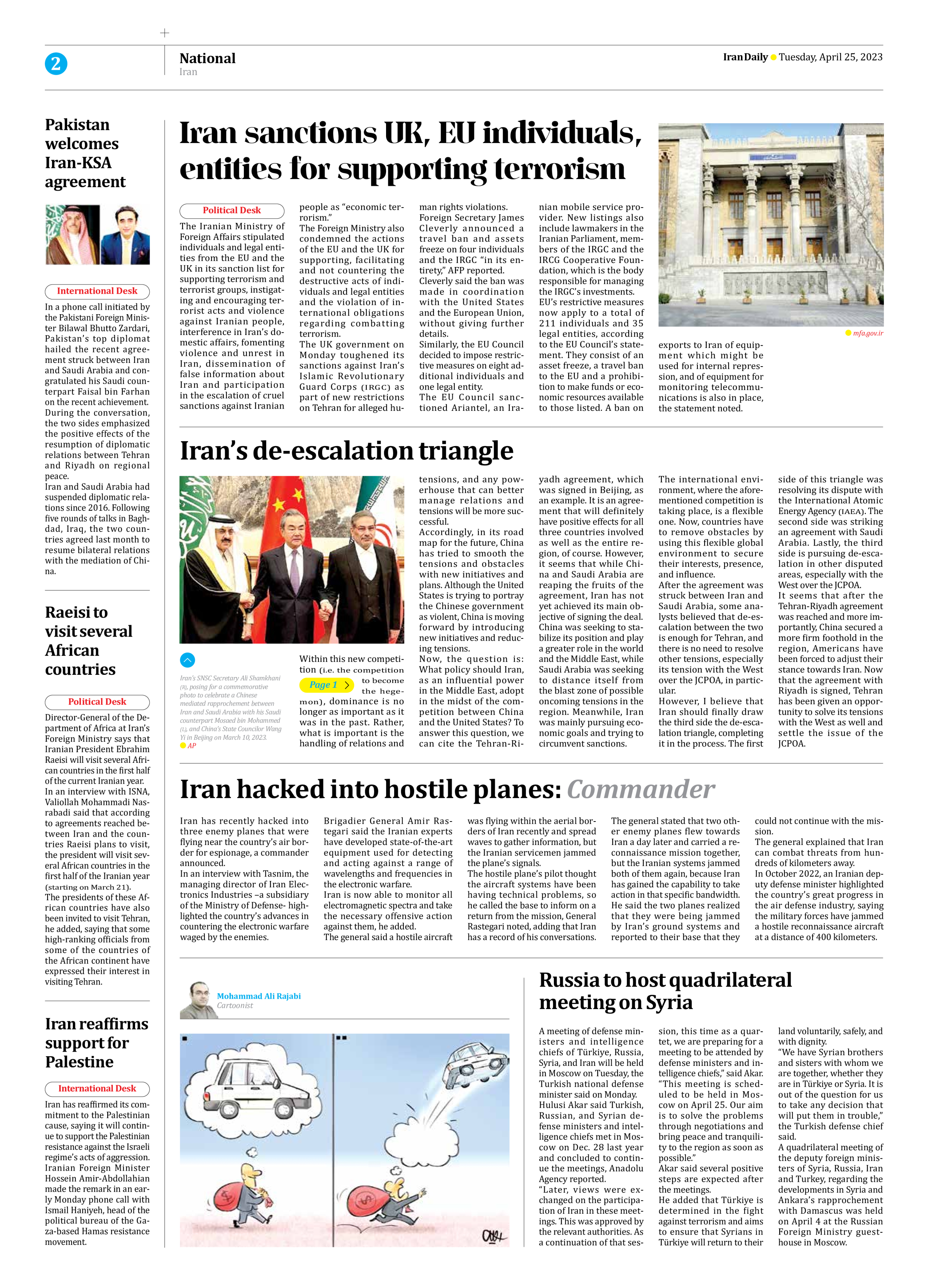
Iran’s de-escalation triangle
Page 1
Within this new competition (i.e. the competition to become the hegemon), dominance is no longer as important as it was in the past. Rather, what is important is the handling of relations and tensions, and any powerhouse that can better manage relations and tensions will be more successful.
Accordingly, in its road map for the future, China has tried to smooth the tensions and obstacles with new initiatives and plans. Although the United States is trying to portray the Chinese government as violent, China is moving forward by introducing new initiatives and reducing tensions.
Now, the question is: What policy should Iran, as an influential power in the Middle East, adopt in the midst of the competition between China and the United States? To answer this question, we can cite the Tehran-Riyadh agreement, which was signed in Beijing, as an example. It is an agreement that will definitely have positive effects for all three countries involved as well as the entire region, of course. However, it seems that while China and Saudi Arabia are reaping the fruits of the agreement, Iran has not yet achieved its main objective of signing the deal.
China was seeking to stabilize its position and play a greater role in the world and the Middle East, while Saudi Arabia was seeking to distance itself from the blast zone of possible oncoming tensions in the region. Meanwhile, Iran was mainly pursuing economic goals and trying to circumvent sanctions.
The international environment, where the aforementioned competition is taking place, is a flexible one. Now, countries have to remove obstacles by using this flexible global environment to secure their interests, presence, and influence.
After the agreement was struck between Iran and Saudi Arabia, some analysts believed that de-escalation between the two is enough for Tehran, and there is no need to resolve other tensions, especially its tension with the West over the JCPOA, in particular.
However, I believe that Iran should finally draw the third side the de-escalation triangle, completing it in the process. The first side of this triangle was resolving its dispute with the International Atomic Energy Agency (IAEA). The second side was striking an agreement with Saudi Arabia. Lastly, the third side is pursuing de-escalation in other disputed areas, especially with the West over the JCPOA.
It seems that after the Tehran-Riyadh agreement was reached and more importantly, China secured a more firm foothold in the region, Americans have been forced to adjust their stance towards Iran. Now that the agreement with Riyadh is signed, Tehran has been given an opportunity to solve its tensions with the West as well and settle the issue of the JCPOA.







